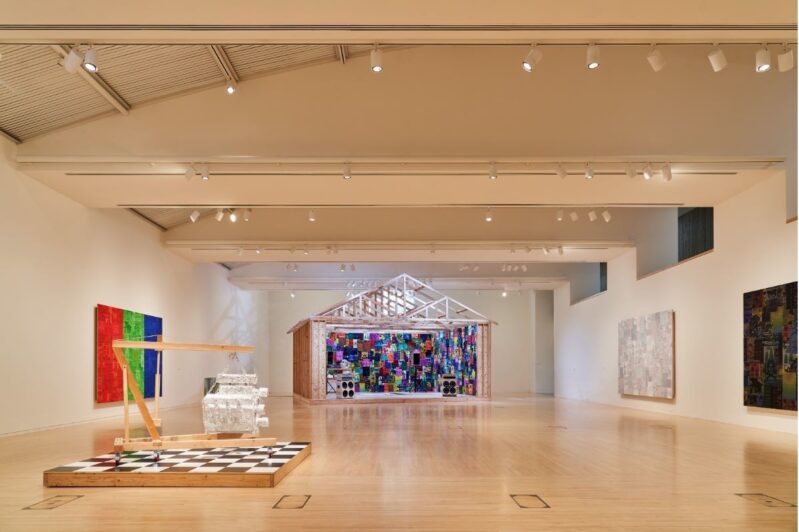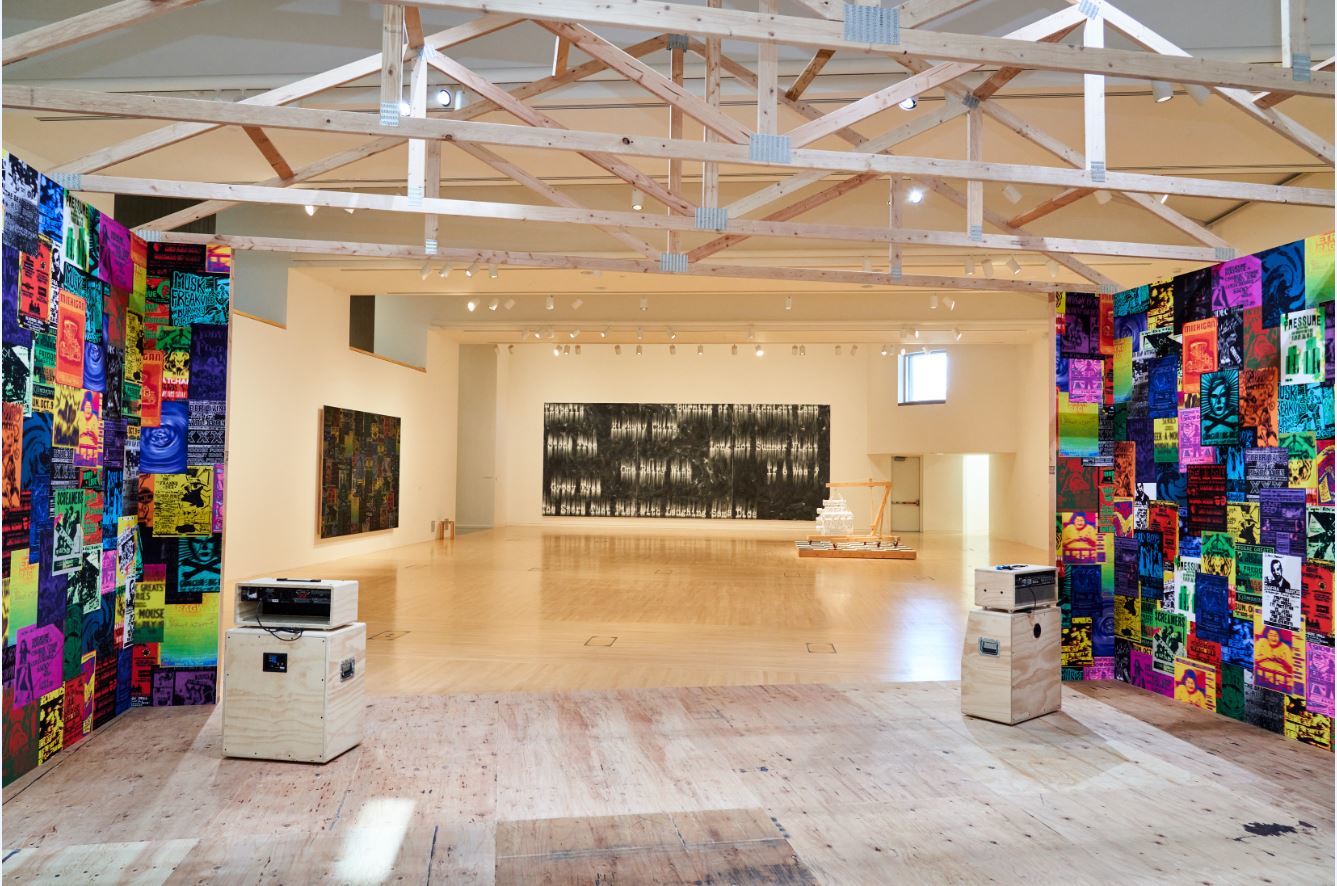Part Gallery Exhibition, Part Homage to the Seattle Music Scene, "Gary Simmons: The Engine Room" Waits to Roar to Life at the Henry
Review of Gary Simmons: The Engine Room at the Henry Art Gallery
Written by Teen Editor Lily Williamson and edited by TeenTix Teaching Artist Leah St. Lawrence

Stepping into the space that houses the Henry Art Gallery’s new exhibit Gary Simmons: The Engine Room, I was immediately immersed in grunge. From the silvery engine sculpture near the entrance to the colorful, large paintings adorning the walls, each component is imbued with a unique punk-rock feel, and every piece seems to fit perfectly in place.
The exhibit makes smart use of the museum’s sizable lower-level galleries. Each of its components—three large-scale paintings, a silvery sculpture of an engine, and an imposing architecture installation—is neatly placed in the airy, grand space, and the bright colors and grunge feel juxtapose nicely with the grandeur of the gallery. When I entered the room I was struck by this—it seemed like the exhibit had been designed for the space. And, it was. Artist Gary Simmons crafted each piece in the exhibit for the Henry Art Gallery, working directly with the exhibit’s curator, Shamim Momin, and LANGSTON, an arts and culture organization that centers Black artists, to design the show.
The one exception to the colorful nature of the exhibit is “B Sides,” a haunting, de-saturated painting towards the back of the gallery done in Simmons’ characteristic method of “erasure drawing,” which involves using chalk on blackboard paint. The faded and ghostly nature of the piece invokes ideas of memory and the past, apt for a painting that highlights the lesser-known works of Jimi Hendrix. While parts of the exhibit recall the past, the true centerpiece, “Garage Band,” turns towards the future of Black artistry.

Placed towards the back of the gallery, “Garage Band” is an inviting architectural sculpture in the style of a mid-century suburban garage. Memories of all the local garage shows with aspiring grunge bands and wannabe punk stars I went to in middle and high school came flooding back in a wave of nostalgia. The walls are adorned with vibrant prints of old band posters, some of which have been altered into obscurity, and all of which are from Simmons’ personal collections. Looking them over, I recognized some Seattle bands—a nice nod to the local music scene.
When I spoke with curator Shamim Momin after viewing the exhibit, she revealed how “Garage Band” is meant to embody the idea of what she calls “creative lore.” The suburban garage has always been a site of “innovation and creativity:” it’s where tech giants like Apple, Google, and Amazon started, and it has been the site of innumerable other instances of invention and tinkering. In honor of this, musicians are invited to the Henry to use the space to rehearse and hone their craft. In May, Seattle rock-n-roll band The Black Tones used “Garage Band” as their residency space, and in June, Ishmael Butler will do the same.
That’s what is so remarkable about this exhibit: how it comes to life. Although I wasn’t able to see the space on a day with a performer, I could tell that it was meant to be used--something felt missing. The sculpture feels lived in, and standing outside of it, I felt like I was stepping into a friend’s garage to listen in on a jam session. Momin believes that the experience the exhibit provides of seeing live music after more than a year without it is “revelatory,” especially because arts goers are able to see the musicians deep in their process of creation.
However, the performance space is empty much of the time, and has little interpretive signage, which may not have been the best choice for a show that relies so heavily on subtle details and context. While much of the exhibit is bright, big, and in-your-face, looking closely reveals the local touches that really show that it was designed for Seattle. Only upon exiting the gallery can one read a large panel that contextualizes Simmons’ work, and without in-exhibit interpretation or the presence of a local band, it is possible to miss many of the smart details that make the exhibit so special. Gary Simmons: The Engine Room was built to be a space of creativity, performance, and coming together, and visiting the gallery when it’s not full of song means having to fill that void by yourself. In the absence of music and community, the performance space can feel empty, and it’s up to each visitor to create their own meaning.
Lead photo credit: Jonathan Vanderweit, courtesy of the Henry Art Gallery
This review was written as part of mentorship program where members of the Teen Editorial Staff receive one-on-one mentorship by Press Corps Teaching Artists and professional critics. The Teen Editorial Staff is made up of 6 teens who lead the TeenTix Newsroom and curate the review portion of the TeenTix blog. More information about the Teen Editorial Staff can be found HERE.
The TeenTix Press Corps promotes critical thinking, communication, and information literacy through criticism and journalism practice for teens. For more information about the Press Corps program see HERE.


